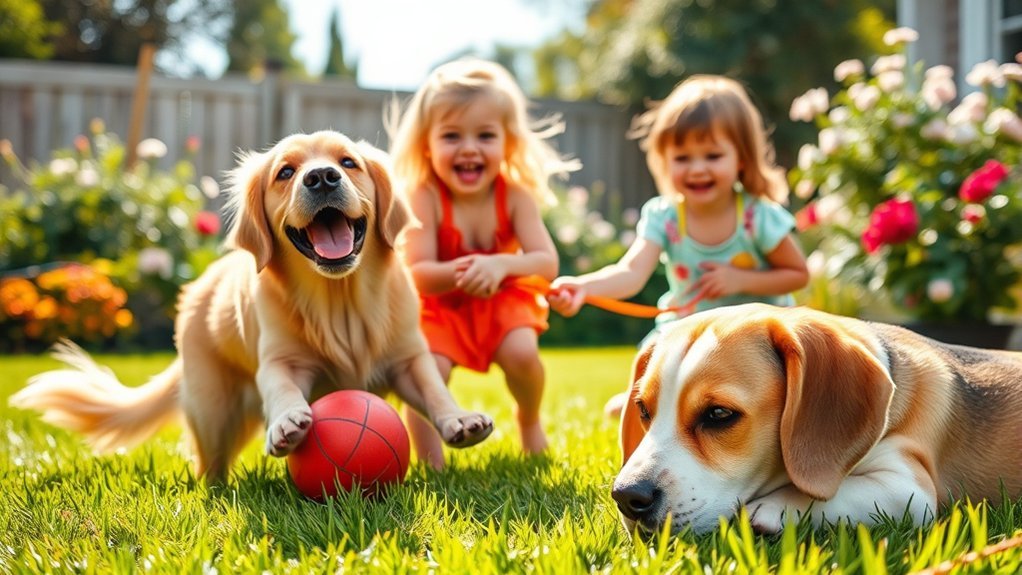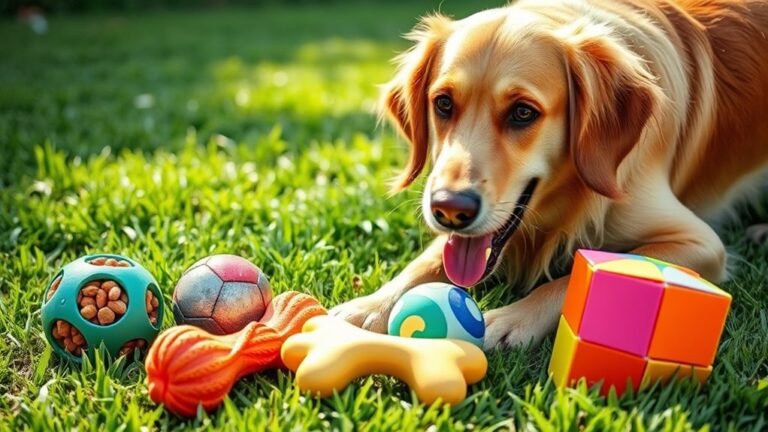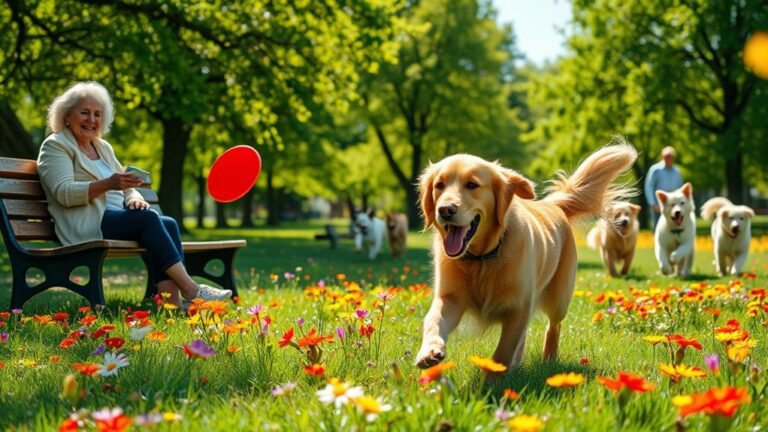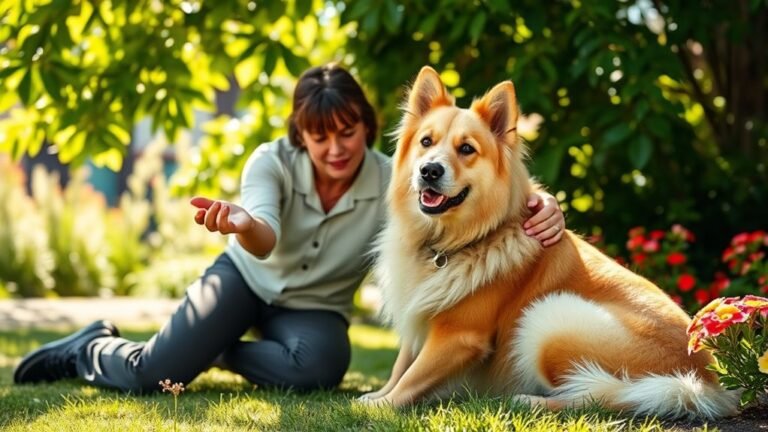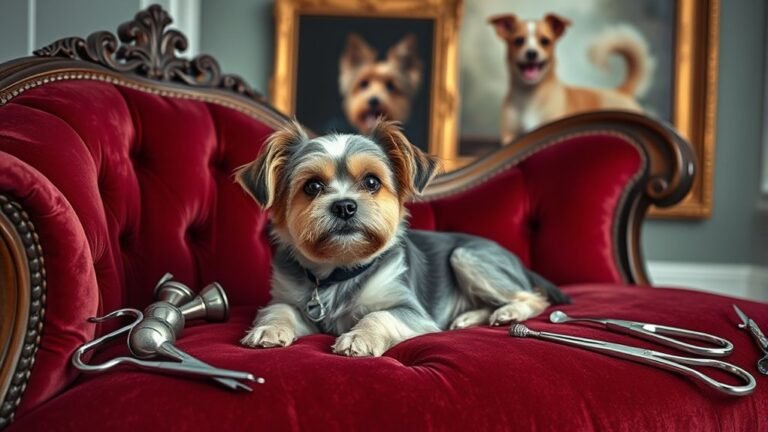7 Best Dog Breeds for Families With Young Kids
Choosing a dog for your family is an important choice, especially if you have young kids. You want a breed that is friendly, patient, and gentle. A good dog can be a great friend for your kids and help create a happy home. Let's look at some of the best dog breeds that are great for families with young children. Each dog has its own special traits that can make your family life better.
- Labrador Retriever: Labs are friendly and love to play. They are good with kids and are known for being patient.
- Golden Retriever: Goldens are sweet and gentle. They are playful and very loyal to their families.
- Beagle: Beagles are curious and love to explore. They are friendly with kids and enjoy being part of fun activities.
- Bulldog: Bulldogs are calm and easygoing. They are good with children and love to relax with their families.
- Poodle: Poodles are smart and come in different sizes. They are friendly and good with kids, plus they don't shed much.
- Boxer: Boxers are energetic and playful. They are very protective of their families and love to play with kids.
- Cavalier King Charles Spaniel: This breed is gentle and loving. They enjoy cuddling and are great companions for kids.
Each of these breeds brings joy and love into a home. Consider your family's activity level and space when picking a dog. A friendly dog can make your family days even more fun!
Key Takeaways
Here are seven dog breeds that are great for families with young kids:
- Labrador Retrievers are friendly and love to make people happy. They are great with kids and easy to train.
- Golden Retrievers are patient and very loyal. They enjoy being active and having fun with children.
- Beagles are playful and can adapt to different homes. They encourage kids to play and be active.
- Bulldogs are gentle and protective. They create a calm environment for young children and don't need a lot of exercise.
- Poodles are smart and full of energy. They are good for families with allergies and love to bond with their owners through training and play.
- Boxers are playful, loyal, and protective. They have a lot of energy and enjoy playing with kids.
- Cavalier King Charles Spaniels are affectionate and gentle. They love being around people and are great companions for young children.
Choosing the right dog for your family can bring joy and friendship. Each of these breeds has unique traits that can make family life wonderful.
Labrador Retriever
If you're looking for a dog that gets along well with young kids, the Labrador Retriever is a great choice.
Labradors are friendly and gentle. They're perfect companions for children because they love to play and show affection. This makes it easy for your family to bond and have fun together.
Labradors are eager to please, which helps with training. By using positive reinforcement and being consistent, they quickly learn commands and house rules.
This creates a happy home for everyone.
Having a Labrador as a family pet brings joy and teaches kids to be responsible and caring.
This helps create a loving atmosphere at home where everyone can feel good.
Golden Retriever
If you're looking for a dog that's perfect for a busy home with kids, consider getting a Golden Retriever. They're friendly, gentle, and great with children.
Golden Retrievers are patient and loyal, which makes them wonderful family pets.
With some simple training, you can easily teach them commands and fun tricks. They learn quickly because they want to please you, which helps keep playtime safe and fun for your kids.
Golden Retrievers love to join in on family activities, whether it's playing fetch in the yard or cuddling on the couch. They truly become a special part of your family.
Beagle
If you're looking for a pet for your family, a Beagle might be the perfect choice, especially if you have young kids. Beagles are friendly and fun-loving, making them great companions for families.
Here are some reasons why Beagles are such a good fit:
- Playful: Beagles love to play and have fun with kids.
- Flexible: They can live in different types of homes, even in small apartments.
- Active: Beagles need exercise, which can help your family stay active together.
- Easy to Train: They're eager to learn, making training a positive experience.
- Friendly with Others: Beagles usually get along well with other pets, which is great for family life.
All these traits make Beagles wonderful family pets. They can bring joy and love to your home!
Bulldog
Bulldogs make great pets for families with young kids. They're gentle, loyal, and friendly. Their calm nature helps them get along well with children, creating a warm and loving home.
Bulldogs are patient and protective, making them a safe playmate for your little ones.
When it comes to exercise, Bulldogs don't need much. A few short walks and some fun playtime are usually enough to keep them happy and healthy. This makes Bulldogs a good choice for families who want a loving dog without too much exercise stress.
Bulldogs are truly loving and loyal companions, ready to join your family and bring joy to your home.
Poodle
When you want a fun and smart friend for your family, the Poodle is a great choice. They're friendly and can fit into many different homes. Their energy and eagerness to please make them perfect playmates for kids.
Here are some reasons why a Poodle is a wonderful addition to your family:
- Friendly Temperament: Poodles are nice, loving, and social.
- Playful Spirit: They love playing games and going outside.
- Good for Allergies: Their curly fur helps reduce shedding and allergens.
- Smart and Trainable: They learn quickly, which helps them bond with your kids.
- Easy Grooming: Regular grooming keeps them looking and feeling their best.
With a Poodle, you'll find a loyal friend that fits right into your family!
Boxer
If you want a fun and loving dog, a Boxer could be a great choice for your family.
Boxers have a lot of energy and love to play. They're perfect for families with kids because they enjoy running and jumping around. You'll often see them bouncing and asking your little ones to join them in play.
Boxers are also very loyal. They protect their homes and their families. They pay attention to what's going on around them.
However, because they've so much energy, they need to exercise regularly. Daily walks and playtime are important. This will help keep your Boxer happy and healthy.
Irish Setter
After looking at the fun-loving Boxer, you should consider the Irish Setter for your family with kids.
These dogs are friendly and make wonderful friends for little ones. Their playful spirit and endless energy mean they'll always be ready for a good game.
- Irish Setter Traits: They've a beautiful, soft coat.
- Irish Setter Behavior: They're gentle and loving, perfect with kids.
- Social Skills: They like being around people and want to be part of the family.
- Smart: They learn quickly and do well with training.
- Need for Activity: They love to run and play, so daily exercise is important!
Adding an Irish Setter to your home can fill your family with happy moments.
Frequently Asked Questions
What Size Living Space Is Needed for These Dog Breeds?
When you pick a dog breed, think about how much space it needs. Small dogs, like Chihuahuas, can happily live in apartments. They don't need a lot of room to run around. Bigger dogs, like Labradors, need more space to move. They like to run and play, so a yard or a big area is best for them. Always check your living space to make sure it will keep your dog happy.
How Much Exercise Do These Breeds Require Daily?
Different dog breeds need different amounts of exercise every day. Active dogs, like Border Collies or Boxers, enjoy running and playing a lot. They need high-energy activities to stay happy. On the other hand, more relaxed dogs, like Bulldogs or Pugs, are fine with gentle walks. They prefer a slower pace and short outdoor time.
Understanding what your dog needs is important. It helps keep them healthy and happy. Remember, spending time together while exercising is fun for both you and your dog. So, pay attention to your dog's exercise style and make sure they get what they need!
Are These Breeds Prone to Any Specific Health Issues?
Some dog breeds can have health problems that run in their genes. For example, certain breeds might get hip dysplasia or heart issues. It's important to look up the health risks for each breed. This way, you can find a dog that fits well with your family's lifestyle and needs.
Can These Dogs Adapt to Apartment Living?
Yes, many dogs can live happily in apartments. Look for breeds that are friendly and don't need a lot of room. Regular walks, playtime, and socializing help them do well in your cozy space. With some care and attention, your dog can thrive in an apartment just like they would in a house!
What Is the Average Lifespan of These Dog Breeds?
The average lifespan of many dog breeds is between 10 to 15 years. This means that when you choose a dog, you can expect it to be part of your family for quite a while. Knowing how long different breeds usually live can help you pick the right one for your family. It also helps you think about the memories you will create together during those years.

